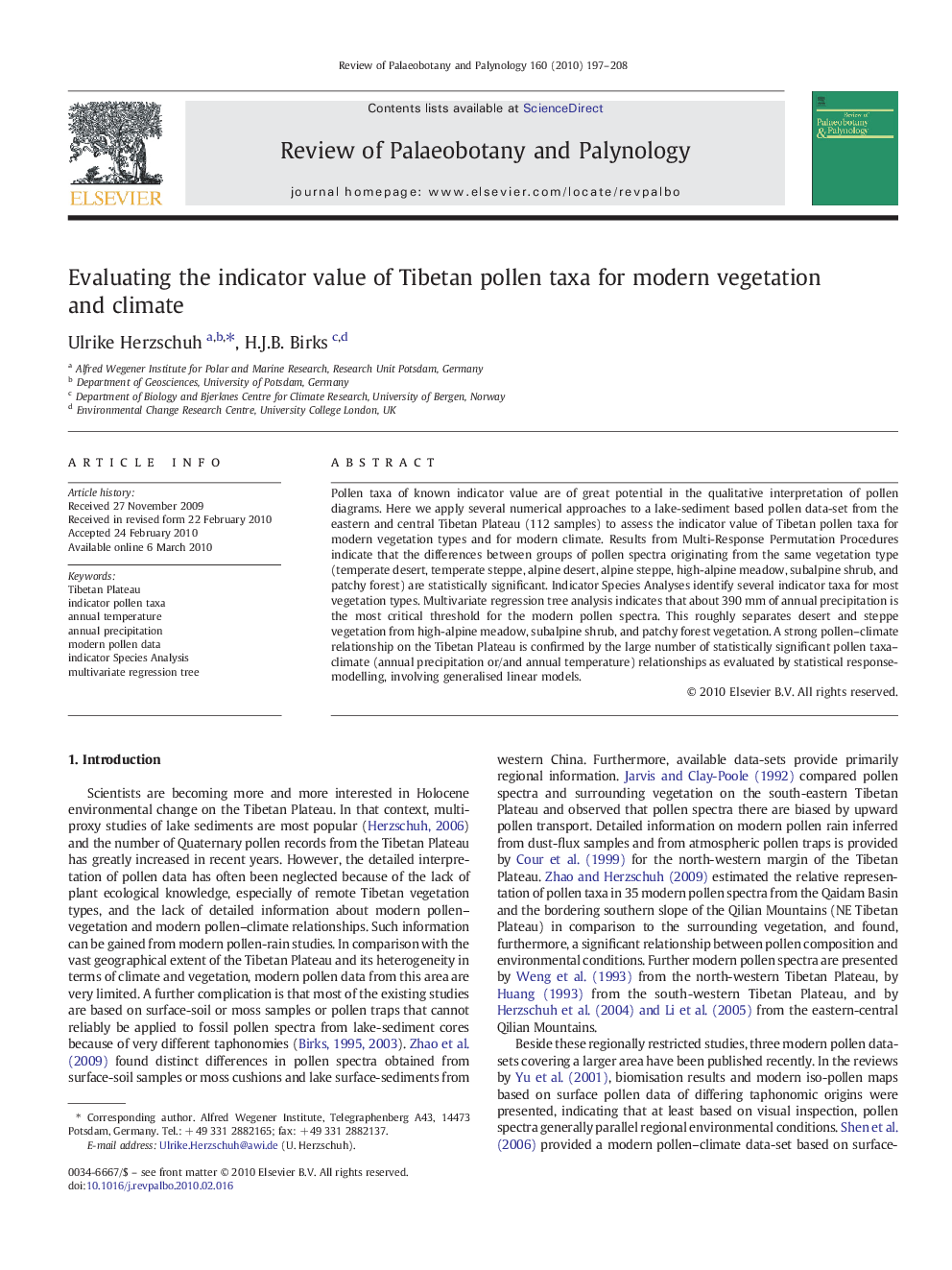| Article ID | Journal | Published Year | Pages | File Type |
|---|---|---|---|---|
| 4750702 | Review of Palaeobotany and Palynology | 2010 | 12 Pages |
Pollen taxa of known indicator value are of great potential in the qualitative interpretation of pollen diagrams. Here we apply several numerical approaches to a lake-sediment based pollen data-set from the eastern and central Tibetan Plateau (112 samples) to assess the indicator value of Tibetan pollen taxa for modern vegetation types and for modern climate. Results from Multi-Response Permutation Procedures indicate that the differences between groups of pollen spectra originating from the same vegetation type (temperate desert, temperate steppe, alpine desert, alpine steppe, high-alpine meadow, subalpine shrub, and patchy forest) are statistically significant. Indicator Species Analyses identify several indicator taxa for most vegetation types. Multivariate regression tree analysis indicates that about 390 mm of annual precipitation is the most critical threshold for the modern pollen spectra. This roughly separates desert and steppe vegetation from high-alpine meadow, subalpine shrub, and patchy forest vegetation. A strong pollen–climate relationship on the Tibetan Plateau is confirmed by the large number of statistically significant pollen taxa–climate (annual precipitation or/and annual temperature) relationships as evaluated by statistical response-modelling, involving generalised linear models.
